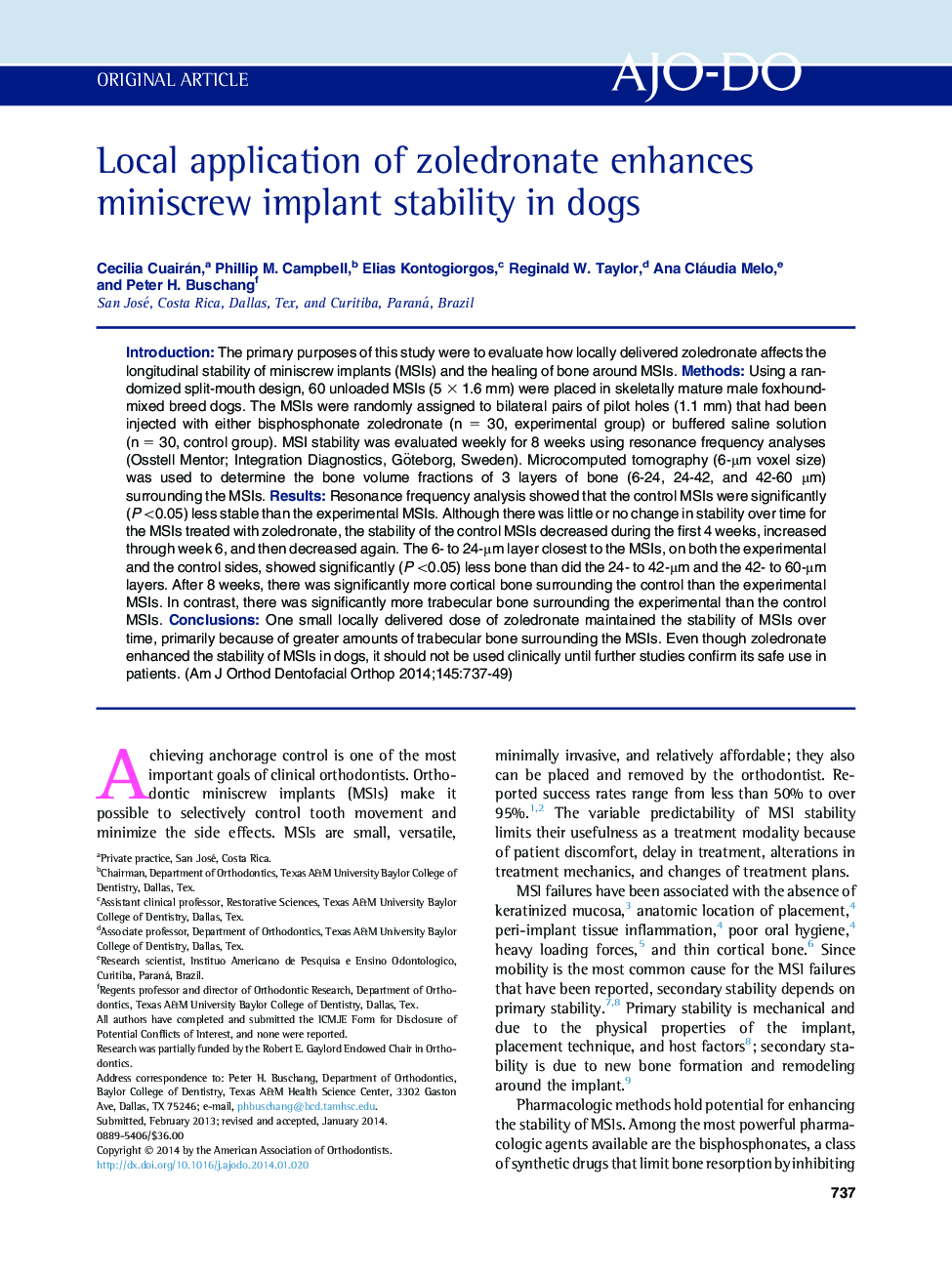| Article ID | Journal | Published Year | Pages | File Type |
|---|---|---|---|---|
| 3115684 | American Journal of Orthodontics and Dentofacial Orthopedics | 2014 | 13 Pages |
IntroductionThe primary purposes of this study were to evaluate how locally delivered zoledronate affects the longitudinal stability of miniscrew implants (MSIs) and the healing of bone around MSIs.MethodsUsing a randomized split-mouth design, 60 unloaded MSIs (5 × 1.6 mm) were placed in skeletally mature male foxhound-mixed breed dogs. The MSIs were randomly assigned to bilateral pairs of pilot holes (1.1 mm) that had been injected with either bisphosphonate zoledronate (n = 30, experimental group) or buffered saline solution (n = 30, control group). MSI stability was evaluated weekly for 8 weeks using resonance frequency analyses (Osstell Mentor; Integration Diagnostics, Göteborg, Sweden). Microcomputed tomography (6-μm voxel size) was used to determine the bone volume fractions of 3 layers of bone (6-24, 24-42, and 42-60 μm) surrounding the MSIs.ResultsResonance frequency analysis showed that the control MSIs were significantly (P <0.05) less stable than the experimental MSIs. Although there was little or no change in stability over time for the MSIs treated with zoledronate, the stability of the control MSIs decreased during the first 4 weeks, increased through week 6, and then decreased again. The 6- to 24-μm layer closest to the MSIs, on both the experimental and the control sides, showed significantly (P <0.05) less bone than did the 24- to 42-μm and the 42- to 60-μm layers. After 8 weeks, there was significantly more cortical bone surrounding the control than the experimental MSIs. In contrast, there was significantly more trabecular bone surrounding the experimental than the control MSIs.ConclusionsOne small locally delivered dose of zoledronate maintained the stability of MSIs over time, primarily because of greater amounts of trabecular bone surrounding the MSIs. Even though zoledronate enhanced the stability of MSIs in dogs, it should not be used clinically until further studies confirm its safe use in patients.
